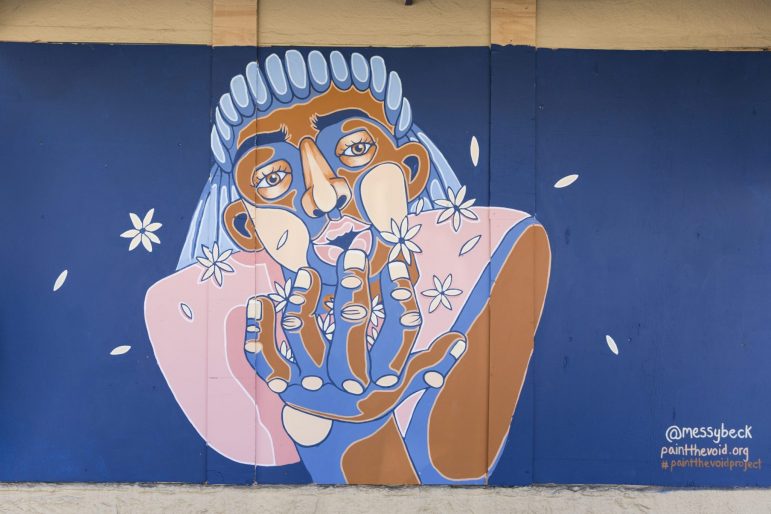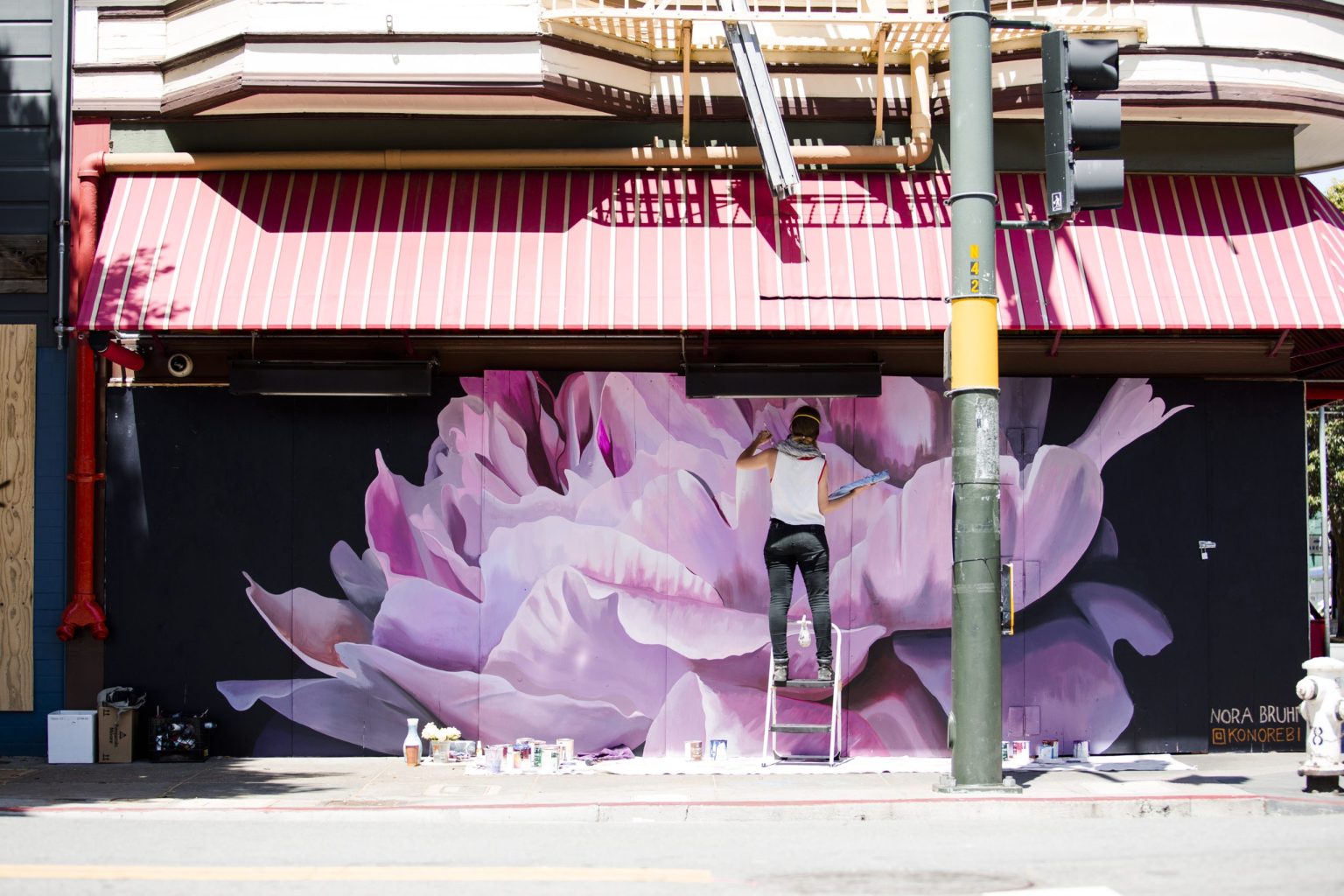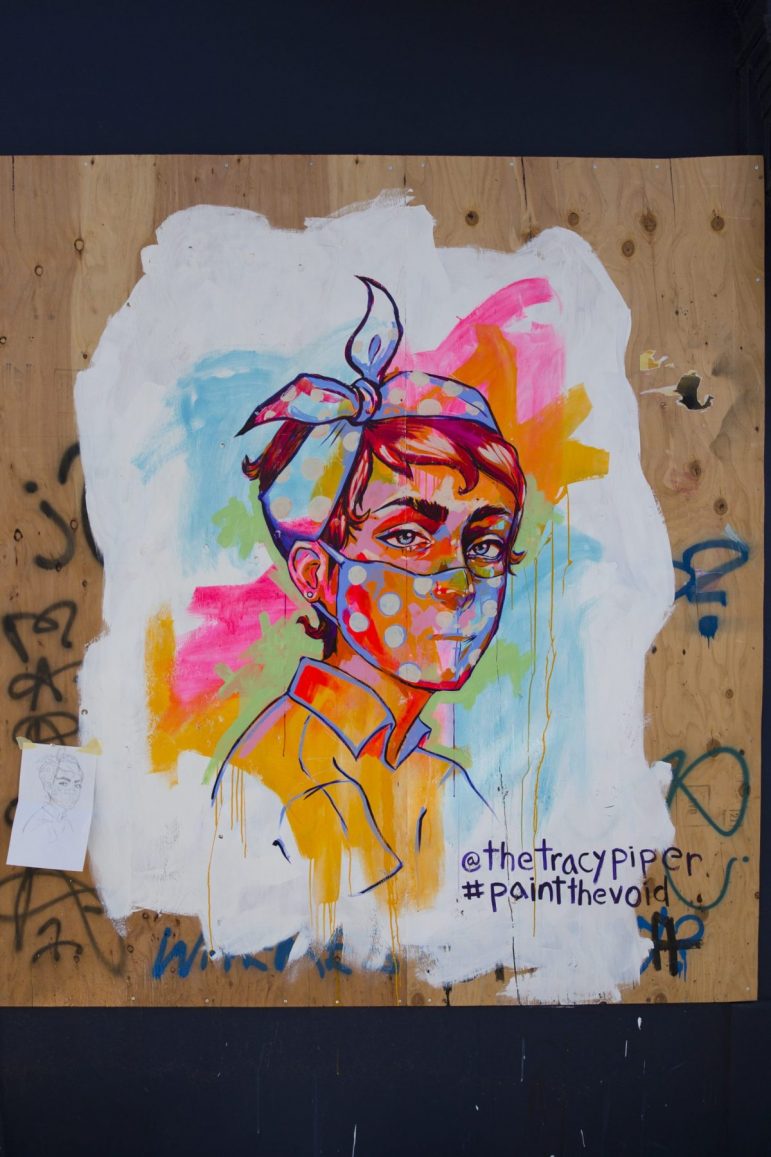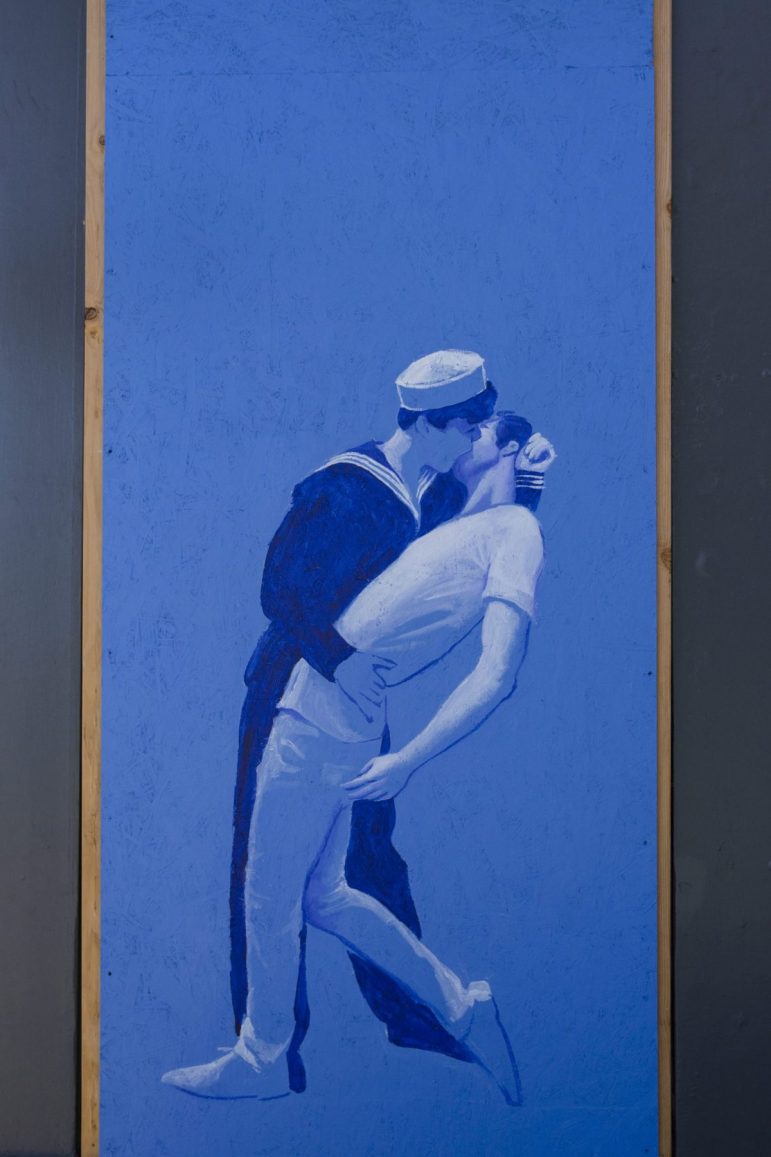It started with a goal to paint 10 murals in San Francisco during the darkest days of the 2020 lockdown, and bring some color and joy to vacant city streets. Today, Paint the Void, a nonprofit organization that put artists to work transforming boarded-up businesses, has facilitated 150 murals across San Francisco, Oakland and Berkeley and supported 170 artists, says cofounder, executive director and curator Shannon Riley.
This month, the public will have an opportunity to see 49 of the lockdown murals — all in one place — during “The City Canvas: A Paint the Void Retrospective,” a limited-run exhibition showing Saturday and Sunday and Jan. 27-30 at Pier 70 in San Francisco’s Dogpatch neighborhood.
The exhibition is a celebration of the artists who were part of the cathartic release of artwork during the pandemic, Riley says.
It’s also a way to acknowledge and thank donors and supporters who helped fund the murals. The work on display will range from 4- to 43-feet long and up to 11.5-feet high and, for many, will serve as reminders of how essential art and beauty are to our collective well-being.

Riley and Meredith Winner, the founders of Building 180, a San Francisco-based art production and consulting agency, had mobilized in March 2020 when their projects were put on hold and artists everywhere were out of work. They saw boarded-up buildings and decided to use their logistical know-how to secure grants and other funding, and they reached out to local businesses for permission to paint the bleak surfaces covering windows and doors.
They partnered with Inga Bard of Art for Civil Discourse and aimed to raise $15,000 to fund 10 murals. They surpassed their goal, and then paid artists to go out and paint the city, Riley says. Artists had creative freedom and worked with businesses to finalize their design ideas for the murals. Later, Riley and Winner joined forces with Lisa Vortman and Veronica Pheils — cofounders who would contribute their skills in fundraising, project management and more.
Like many people, Riley and Winner thought the lockdown would last a few weeks, and they moved fast to get murals up and artists paid. But as the lockdown dragged on, they saw there was more work to do. Paint the Void raised more money and continued to provide opportunities to artists to paint murals. By mid-September 2020, the organization had commissioned 100 murals by 91 artists, Riley says. And artists have received other, unrelated commissions as a result of the work they did with Paint the Void.
Riley says that to date, Paint the Void has raised nearly $500,000. And while the response to the murals has been positive, the effort has faced plenty of challenges. First, there were concerns around COVID — to minimize spread during shelter-in-place, Paint the Void made sure artists were socially distanced when they were working.
Then there were attacks and harassment, and some artists had their tools stolen. Though it is not uncommon for muralists and street artists to experience such vitriol, the attacks made Riley realize how much more protection was needed for artists working in public areas, she says.
There have also been opportunities for reflection and change. Initially, Paint the Void recommended uplifting and positive imagery, according to its web FAQ.
But as civil unrest exploded following the murders of Breonna Taylor and George Floyd, Paint the Void’s founders realized they were part of the civil discourse that was being expressed in the art community.
It was at that point that the founders realized they were commissioning more white men to create murals. They redirected their efforts and changed their selection process to be more representative of BIPOC artists, and since then, Paint the Void has prioritized Black Lives Matter and themes of equality.
While the lockdown may have ended, the pandemic hasn’t gone away. So what’s next for Paint the Void?
For now, the group is focusing on the upcoming exhibition. It is also creating a book that will be a collection of photos, portraits and stories of the project, Riley says. Long term, the founders plan to stay involved in facilitating public art. Paint the Void received a grant from Shine On SF to create a mural each month — the murals will be a “paint by numbers” format, and the public will be invited to paint them.
“We moved so fast early on,” Riley says. “Now we are looking at how we continue to do this beyond boards.”
About 30 of the murals will be for sale at the exhibition. A limited number of “The City Canvas: A Paint the Void Retrospective” tickets are available at eventbrite with a suggested donation of $10: https://www.eventbrite.com/e/the-city-canvas-a-paint-the-void-retrospective-tickets-221710240297.
Proof of full vaccination against COVID-19, and masks are required. For more information, visit paintthevoid.org.


